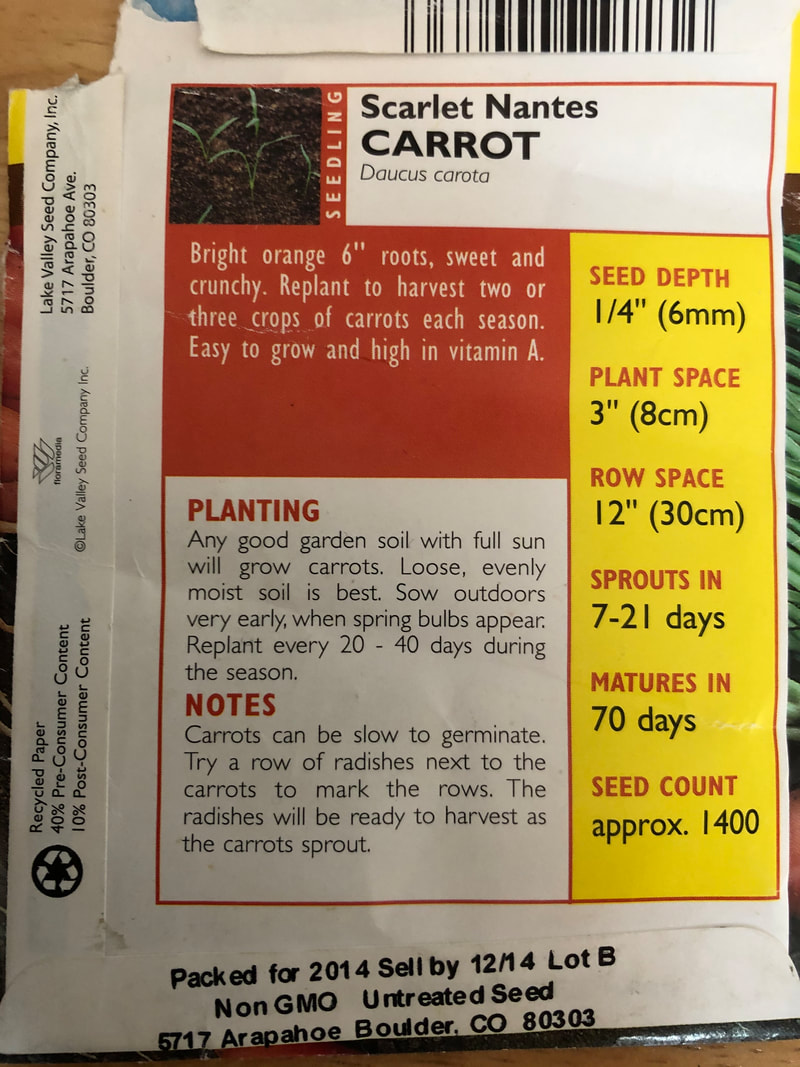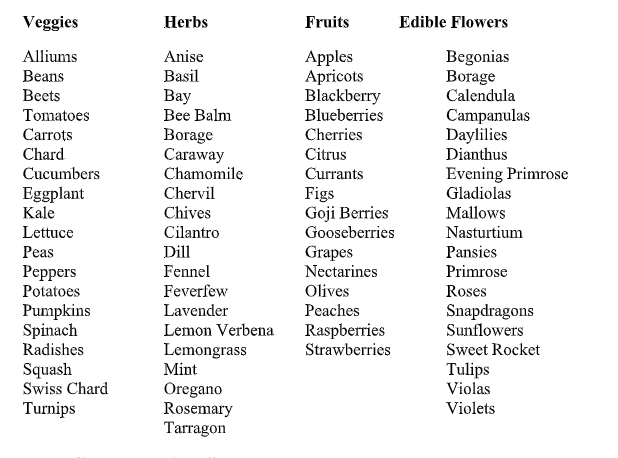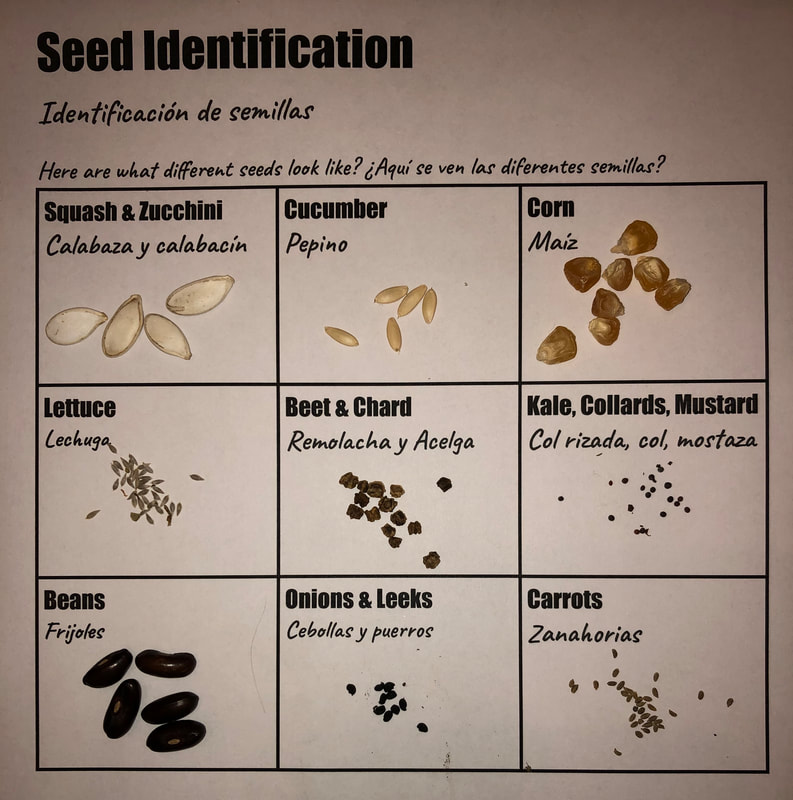Get Seeds
New to GardeningAre you new to gardening? You'll want to have some basic guidance before you put your hands in the soil.
Here is the Absolute Beginner's Gardening Class Presentation slides. Sunlight Requirements Determine how much sunlight the space you want to grow gets at this time of year? Most plants want at least 6-8 hours of sunlight. Many will not do well if they don't get enough sun, such as squash, beans, peppers, eggplants, and tomatoes. Partial shade If you have a place that gets partial sun, 2-6 hours of direct sunlight and the rest is lightly shaded, you can grow arugula, beets, carrots, celery, chard, leaf lettuce, scallion, sorrel, and spinach. |
Learn about GardeningYou'll want to understand your soil, water requirements, and how to manage pests. Here are some ways to get help:
1. Read the Contra Costa Master Gardeners free e-book, Vegetable Gardening: Handbook for Beginners. 2. Find a friend or neighbor that you can video chat with and talk about your garden. You can do virtual tours of each other's gardens. 3. Take an online class about gardening. The Oregon State Master Gardeners have a 4-6 hour, self-paced vegetable gardening class that is free for the month of April 2020. 4. Golden Gate Gardening is a great resource that is specific to our area. 5. Learn about seed saving. Everyone can easily save quality seeds from tomatoes, lettuce, peas, arugula, cilantro, and beans. Here is are two free e-books to get you started.
|
|
These plants prefer full sun, but will tolerate light to partial shade: bush beans, summer squash, and bush tomatoes that are adapted to cool regions (ex. San Francisco Fog and Siberian varieties) and some cherry tomatoes.
Deeply shaded or fully shaded If the space receives no direct sun, it is not the place to grow your vegetables. What plants should I grow? There some guidelines:
Starts or Seeds? There are pros and cons of buying starts (little baby plants) or planting seeds. Starts Pros: The plants will already be several weeks old and this will save you time because they will be ready to harvest earlier. They don't need to be pampered as much. Cons: It costs more. The COVID-19 virus can live on plastic for 3-days so make sure you wear gloves and sanitize the container or keep it out for 3-days before touching it when you get home. Seeds Pros: There are a lot more varieties available from seed. It is cheaper. You get the satisfaction, awe, and pride of growing something from seed. Cons: It will take longer to get a harvest. Sometimes there is poor germination or pests get your seeds and then you lose more time because you have to replant. Gardening on a Budget1. Tools: Borrow a shovel from a neighbor to get your garden bed started. You could also put a request on Nextdoor if anyone has any gardening tools that they would be willing to give you.
2. Seeds: To get started you can get seeds from the seed library. However, you will eventually want to learn to save your own seeds. Then you'll have seeds for next year and can share some with friends. 3. Free Hacks for your Garden Tips for Starting SeedsIt is often helpful to start seeds in trays or little containers first. Here is a way to make little container for your plants or you can use a toilet paper roll, if you were able to find any TP in the store. (You may want to read this article from the Natural Resource Defense Council called The Issue with Tissue. You may be inspired - or of necessity - switch to pee rags. Have a clean pile of rags cut from flannel sheets or cotton. Use once and then put in a basin for used rags and just wash them with your laundry.)
Starting plants in trays or little containers requires less watering. It also makes it easier to protect the young plants from birds. You find mesh or a wire basket and flip it over. Just make sure the plants get enough sunlight. Here are some tips:
Soil Testing
There are many reasons why people test their soil. One is to get a snapshot of the minerals and nutrients in the soil. If you have a house that was built before the 1970s, you may want to make sure that soil near the house is lead-free. You can get your soil tested, including a test for heavy metals, easily and inexpensively by taking a sample and sending it with a check to the University of Massachusetts at Amherst. |
Container GardeningSometimes you can't put a garden in the ground because it's not your property or you want to grow something but don't have time to dig up a bed. Container gardening is a great way to go. You can also move the containers around to get more sunlights.
Plants that work well in containers Tips
What Do Different Seeds Look Like?Just like you may look like your parents. Some seeds look similar to other ones because they are in the same family. For example, kale and mustards in the Brassica family. Some common vegetables are even the same species! For example, beets and chard are the same species. The plants look different because over time some people saved for roots and other people saved seeds for the leaves. You can eat beet greens!
Old Seeds: Are They Okay? These seeds are packed for 2014. These seeds are packed for 2014.
Seed companies have to put a date stamp on their seeds once they put them in individual packets, and legally they can only be sold for the year they were packaged in. For home gardeners, and for thousands of years, we did not throw our seeds out at the end of the year. However, it is helpful to know how likely your seeds are to germinate (sprout). Different types of plants will be good for different amounts of times. Also, the way you store your seeds can decrease their viability (ability to live). Storing seeds in a cool, dry location is best.
If you save seeds, it is always helpful to write the year you saved the seeds. If you purchased the seeds, look at the packet for the year. Then look at this Seed Saving Chart. Look at the column labeled "Seed Life." According to the chart, carrots seeds are good for 3 years, but the seeds above are 6 years old. If you can get new carrot seeds, then you might want to in order to ensure you get a crop. However, if you can't buy seeds, then plant more than the packet recommends assuming that some won't germinate. Hopefully, you'll get at least some. Strategy: If the seeds a little old, plant extra seeds. Grow Vertical!Tips for Specific CropSquash & Cucumbers
Tomatoes
|


